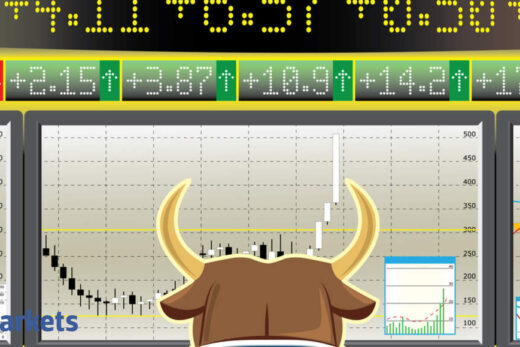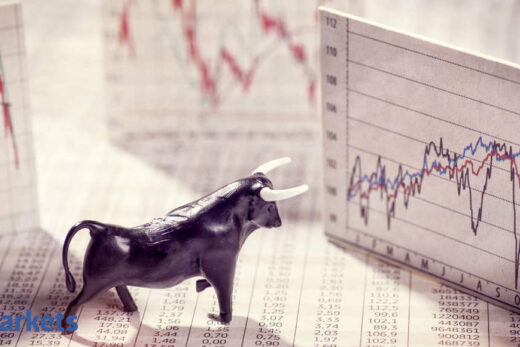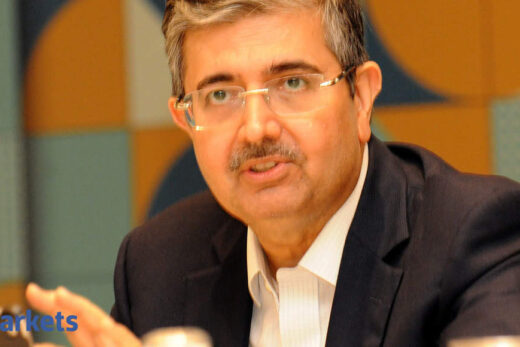It is turning out to be a rough market this Monday. I am guessing the market is pricing in all the Covid news around us?
By all accounts, the second wave seems to be worse than the first one and I think we will see weakness in the market. Same time last year, Covid was a completely unknown enemy. We have seen what happened 12 months after that. We saw a record $135 billion foreign flows of which FPI was $23.5 billion, FDI was $64.7 billion and venture capital and private equity brought in another $47.5 billion. Foreign money will invariably come back into the market as it gets cheaper. Today US consumers have $2 trillion more in cash than they did pre-Covid and this is money in their bank accounts. That money will find its way into global equity markets, into emerging markets and as a result India. So yes, what we are seeing this morning is alarming but that does not mean you will panic and start to sell. I would hold on and look at buying more on dips.
You are saying foreign money will find India attractive after this dip. Won’t the currency weakness be an irritant and a dampener for foreign money to find its way into India?
I think the rupee having dropped to 75 and a little lower than that may be a temporary phenomenon. Temporary does not mean a week but historically, the rupee has depreciated 5-6% annually as the foreigners are well aware that they put money to work in India. I do not think that is really a dampener.
ET Now: Those who bought the panic last time, are getting rewarded. But history may not repeat itself because the circumstances are different, the price levels are different and the forward looking macros is also very different.
Gautam Trivedi: That is fair. Personally, I am of the opinion history will repeat itself for the following reasons: First, look at where interest rates globally are and a lot of people are arguing that inflation is inching back but the US Fed has clearly stated their role of maintaining rates at the current levels for the next 18 months. They said it about six months ago and so I am assuming another 18 months. From a global liquidity standpoint, the United States has had one of the largest monetary policy responses to Covid.
The Trump administration spent a whopping $3 trillion on fiscal stimulus. The Biden administration has unleashed another $2 trillion so that is $5 trillion into the economy in the span of about 13 months. That is massive. Plus, the United States is planning a $2.3-trillion Infra spend. China is spending on infrastructure as is India. In an our annual budget, the spend is up 35% from last year.
Besides the liquidity flow, a number of governments are looking at spending their way out of this recession and as a result I see a lot of money being physically available for investing in global equity markets including India. I am not saying that the money is going to come back in two or three weeks. Foreigners have been selling for the past few weeks but my bet is that money will reverse and come back notwithstanding what is going on the ground and the currency.
Are flows the only reason you are bullish because flows can be fickle?
If you look at the global equity flows in the last 12 months, this is equity money going into global equity markets — not just the US, or the emerging markets or India. Over the last 12 years, the amount was $452 billion. But in the last five months, we have seen $569 billion. That tells us the amount of money that is out there and that obviously needs to find a home.
The other thing to keep in mind is that there is a bit of a TINA (There is no altrenative) factor. If you look at interest rates, given the fact that the estate is doing very well in the US, people think it might be a bubble, But the reality is there are very few areas to incrementally put your money into and hence the equity markets will still be driven by pretty strong fund flows.
Having said that, before the second wave began, a lot of people had assumed that there was a sort of turning the corner from an economic revival standpoint. I remember getting over 100 calls post results conference calls after the third quarter. At least 15 of those companies have had their best quarter ever. We are not just looking at year-on-year numbers. They are talking about the best quarter ever in their history which is remarkable. So the cyclical recovery had started. That is going to slow down a bit.
The good news is that unlike last year, we actually have the vaccine. So, hopefully, if the government moves fast enough and inoculates more people, things will improve. Again it is dependent on the government response. I am sure they are working on it as we speak but if that gathers momentum, I am very confident that we will see a recovery much faster than what the market is telling us today.
We all are hoping that the magic of vaccines kicks in very soon. Is the selling overdone in corporate banks?
To some extent. The stress seems to be more currently in the NBFCs than even the corporate banks and that is why we had a call recently as part of a Nepean Capital Leadership Series with an expert on bankruptcies, the NCLT process and NPLs in general. What he said was interesting. The regular sectors where we have seen stress over the last five to seven years are tourism, real estate, metals. Metals and steel in particular has now been replaced by NBFCs. We had a position in one of the microfinance companies. We actually took a loss and exited that position. Those are the areas that we are sceptical about on the corporate banks. Our preference would still remain private banks.
There has been a huge pipeline of IPOs in the fag end of 2020 as well as 2021. There is a huge tech bet as well. How are you looking at the interest in this space — overall digitisation and Nazara as well as interest in some of the listed players like InfoEdge, Matrimony etc.?
That is a very good question because I know a lot of people who over the past three years or so have actually been investing in the US because of the lack of number of listed players here. This is going to be a very exciting 12 months because we have seen more gaming and tech companies i.e. non-software, getting listed physically in India which is fantastic.
The question one needs to ask is will the listed markets get the same valuation that the VCs and the PEs are giving? These valuations are astronomical — InfoEdge with a Rs 65,000-70,000 valuation, IndiaMart Intermesh at about Rs 26,000-27,000. Everything after that is sub Rs 5,000-6,000. So, there is a massive scope of adding more companies. Besides Nazara, there is also Onmobile in the listed space in terms of gaming. The next 12 months are going to be very exciting. Let us see how the listed market values these companies versus how the VCs and the PEs value them.
Where is the real froth in the market going to come from? Is it going to be driven primarily by the large caps? How are you looking at the overall valuation play out?
Given that we are a mid and small cap fund, we have done reasonably well. In the last four years, the Nifty midcap index has hugely underperformed the Nifty50 and as a result, now it is a great time to invest in midcaps. The Economic Times itself has an article where it says incrementally a lot of money seems to be flowing into mid and small cap funds. We think now would be the best time to incrementally put money into mid and small cap funds.
The Indian equity market in some sense is quite unique because about 12 to 13 sectors in India are primarily dominated by midcaps. In cement for example, the top three companies are in the large cap space but everything thereafter is mid and smallcap.
Same is the case in chemicals, auto ancillaries, building materials and contract manufacturing. The biggest one there is Varun Beverages which has a market cap is only Rs 28000 crore. If In the hotel industry, Indian Hotels’ market cap is Rs 12,000 crore. There are so many sectors which offer very interesting and exciting companies and I would recommend people to incrementally look at that. Yes I do have I am conflicted in saying that but actually that is where we think incrementally we should put money.



